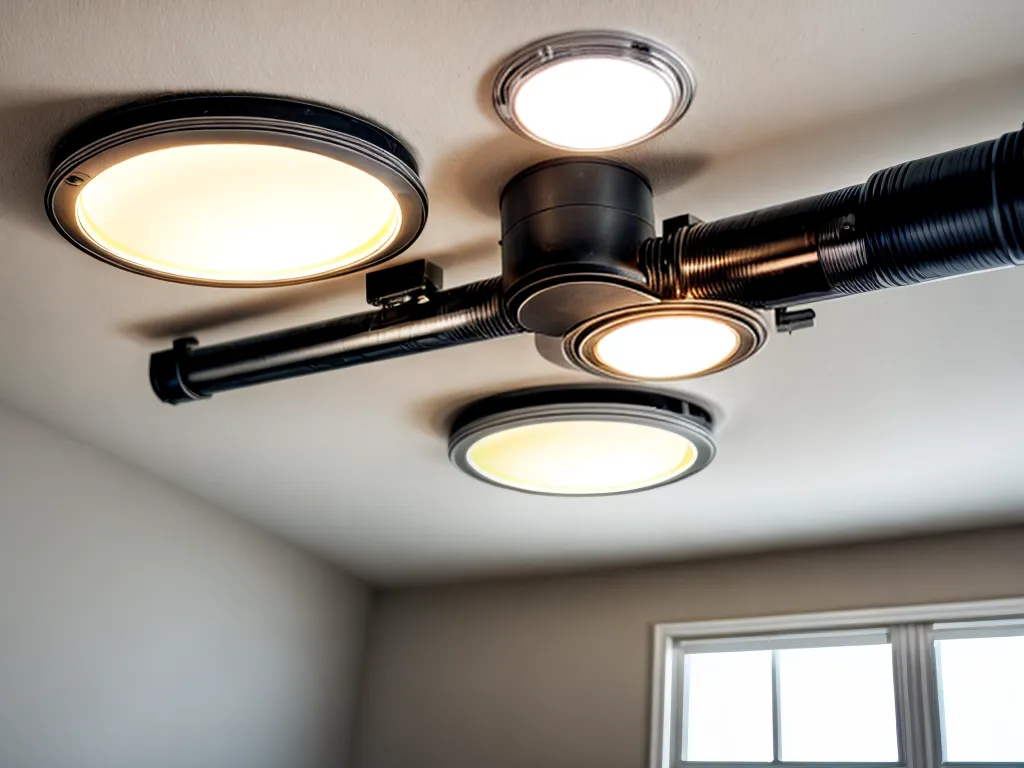
Commercial lighting is essential for any business, but the costs of maintaining lighting systems can quickly add up. With some planning and proactive maintenance, commercial property owners can reduce lighting expenses without sacrificing light quality or safety. This guide will explore several strategies to trim costs and optimize commercial lighting maintenance.
Perform Audits of Existing Lighting Systems
The first step to optimize commercial lighting is to fully understand your existing setup. There are two useful audits to perform:
Lighting Inventory Audit
Catalog all light fixtures on the property by location and fixture type. Note the type of bulbs, age of fixtures, and any existing problems like flickering or dimming lights. An accurate lighting inventory highlights areas for potential upgrades and helps plan maintenance schedules.
Energy Audit
Work with an energy auditor to evaluate current lighting energy usage. The audit will identify inefficient lighting that creates excessive energy bills. Replacing these fixtures with LED technology can dramatically reduce electricity consumption. Energy audits also calculate the return on investment from upgrading fixtures.
Auditing the commercial lighting system provides data to target maintenance efforts and identify areas for improvement.
Implement a Preventative Maintenance Schedule
With lighting inventory information in hand, property managers can develop a preventative maintenance schedule tailored to their specific needs. Commercial lighting requires regular maintenance for optimal efficiency and lifespan.
Check Light Levels
Measure light levels throughout the property with a light meter to ensure lighting meets building codes and intended function. Office lighting requires 30-50 footcandles while detailed factory work may need 100 footcandles.
Group Replacement of Lamps
Coordinate group replacement of all lamps on a regular schedule based on rated lifespan. Group replacement is more efficient than spot replacement and ensures consistent lighting quality.
Clean Fixtures
Dirt, dust, bugs, and film on fixtures reduce light levels. Establish regular cleaning to restore full brightness. Carefully clean acrylic prismatic lenses to avoid scratching.
Inspect Electrical Parts
Check socket connections, wiring, and ballasts for damage. Faulty electrical components can lead to dangerous shorts or fires.
Scheduled maintenance keeps light levels consistent, extends operational life, and prevents premature failures.
Consider Replacing Inefficient Lighting
If the lighting audit identified outdated systems, consider replacement or retrofit options to enhance efficiency.
Switch to LED Lighting
LEDs use 40-60% less electricity than halogens or fluorescents delivering the same light output. The long 50,000+ hour lifespan also reduces maintenance costs. Utility rebates can discount the upfront cost of upgrading to LEDs.
Install Lighting Controls
Occupancy sensors, timers, and dimmers prevent lights running when not needed. These controls typically deliver 20-40% energy savings. Advanced networked controls allow centralized control and automation.
Retrofit Kits
Retrofit kits can convert existing fixtures to more efficient technology. Kits include new reflectors, lenses, and light sources customized to the old housing. For example, LED tube replacement kits adapt fluorescent fixtures at a fraction of full replacement cost.
Upgrading antiquated lighting delivers quick returns through energy and maintenance savings.
Shop Around for Better Bulb Pricing
With an accurate lighting inventory, compare pricing across lighting distributors for the specific bulbs needed. Buying direct from manufacturers can also reduce costs for bulk purchases.
Take advantage of promotions and sales throughout the year to stock up on essential bulbs at the best price. Monitor prices for fluctuating commodities like metals which influence bulb costs.
Consider Group Relamping Service
For convenience and speed, consider contracting a group relamping service for scheduled maintenance. The crew will replace all lamps on-site per the replacement timeline. This lightens the maintenance workload and ensures consistent performance across all lighting. Just be sure to compare pricing as DIY group relamping may still cost less.
Standardize Lighting Systems
Standardizing lighting equipment simplifies maintenance and lowers costs. With fewer lamp types to stock and replace, maintenance efficiency improves. Buying bulk quantities of one or two standardized bulb types yields better pricing than many specialty bulbs.
Aim for standardized lighting during new construction or retrofit projects. Convert existing lighting over time as budgets allow.
Track Energy Usage From Lighting
Install sub-metering equipment to monitor lighting-only electricity usage. This energy data helps identify wasteful systems and size efficiency upgrades. Continuously monitoring usage ensures lighting remains optimized over time.
Lighting is one of the largest energy uses in commercial buildings, so managing this cost is critical.
Careful attention to detail reduces the costs of commercial lighting ownership over decades of service. Performing audits, scheduled maintenance, lamp replacement, and system upgrades provides quality, efficient lighting with lower overhead. With some diligence and planning, significant savings on lighting costs are achievable.